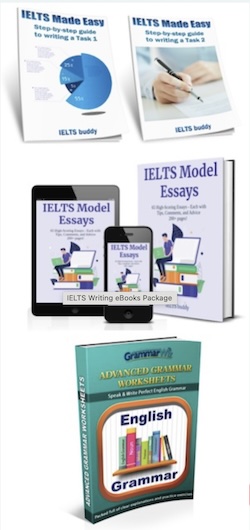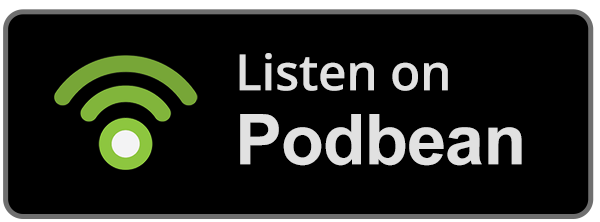- Home
- Practice Tests
- Test 1 (section 3)
IELTS General Reading Practice Test
This is IELTS General Reading Practice Test 1 Section Three.
In this section, rather than having questions on factual everyday information such as a bus timetable, it will be on a topic of general interest. It will be a longer and more difficult reading than the previous two sections.
In the type of question for this practice test you are given some information from the reading and you have to identify in which paragraph you can find it.
Note that each piece of information will be in a different paragraph - you will not use any paragraph twice.
Test 1:
Section Three
Questions 29-35
The text below has eight paragraphs, A-H. Which paragraph contains the information given below the text?
Write the correct letter, A–H, in boxes, 29–35.
The Growth of Pilates
A. Pilates is a physical fitness system developed in the early 20th century by Joseph Pilates, after whom it was named. Pilates called his method "Contrology". It is practiced worldwide, especially in Western countries such as Canada, the United States and the United Kingdom. As of 2005, there were 11 million people practicing the discipline regularly and 14,000 instructors in the United States. In his book Return to Life through Contrology, Joseph Pilates presents his method as the art of controlled movements, which should look and feel like a workout (not a therapy) when properly manifested. If practiced with consistency, Pilates improves flexibility, builds strength and develops control and endurance in the entire body. It puts emphasis on alignment, breathing, developing a strong core, and improving coordination and balance.
B. Precision is essential to correct Pilates.The focus is on doing one precise and perfect movement, rather than many halfhearted ones. Here Pilates reflects common physical culture wisdom, gaining more from a few energetic efforts than from many listless ones. The goal is for this precision to eventually become second nature and carry over into everyday life as grace and economy of movement.
C. Joseph Pilates accompanied his method with a variety of equipment, for which he used the term "apparatus". Each apparatus was designed to help accelerate the process of stretching, strengthening, body alignment and increased core strength started by the mat work. The best-known and most popular apparatus today, the Reformer, was originally called the Universal Reformer, aptly named for "universally reforming the body". Eventually Pilates designed other apparatus, including the Cadillac, Wunda Chair, High "Electric" Chair, Spine Corrector, Ladder Barrel and Pedi-Pole.
D. Pilates published two books related to his training method: Your Health: A Corrective System of Exercising That Revolutionizes the Entire Field of Physical Education in 1934, and Return to Life Through Contrology in 1945. A number of versions of Pilates are taught today and the majority are based on up to nine principles. Frank Philip Friedman and Gail Eisen, two students of Romana Kryzanowska, published the first modern book on Pilates, The Pilates Method of Physical and Mental Conditioning, in 1980 and in it they outlined six "principles of Pilates". These have been widely adopted—and adapted—by the wider community. The original six principles were concentration, control, center, flow, precision, and breathing.
E. Breathing is important in the Pilates method. In Return to Life, Pilates devotes a section of his introduction specifically to breathing "bodily house-cleaning with blood circulation". He saw considerable value in increasing the intake of oxygen and the circulation of this oxygenated blood to every part of the body. This he saw as cleansing and invigorating. Proper full inhalation and complete exhalation were key to this. He advised people to squeeze out the lungs as they would wring a wet towel dry. In Pilates exercises, the practitioner breathes out with the effort and in on the return. In order to keep the lower abdominals close to the spine; the breathing needs to be directed laterally, into the lower rib cage. Pilates breathing is described as a posterior lateral breathing, meaning that the practitioner is instructed to breathe deep into the back and sides of his or her rib cage. When practitioners exhale, they are instructed to note the engagement of their deep abdominal and pelvic floor muscles and maintain this engagement as they inhale. Pilates attempts to properly coordinate this breathing practice with movement.
F. In 2015 the Australian Government's Department of Health published a meta study which reviewed the existing literature on 17 alternative therapies including Pilates, in order to determine if any were suitable for being covered by health insurance. The review found that due to the small number and methodologically limited nature of the existing studies, the effectiveness of Pilates is uncertain. Accordingly In 2017 the Australian government named Pilates as a practice that would not qualify for insurance subsidy, saying this step would "ensure taxpayer funds are expended appropriately and not directed to therapies lacking evidence”.
G. For the treatment of lower back pain, low quality evidence suggests that while Pilates is better than doing nothing, it is no more effective than other forms of physical exercise. There is some evidence regular sessions can help with the conditioning of the abdominal muscles of healthy people, when compared to doing no exercise. There is no good evidence it helps improve balance in elderly people.
H. Pilates is not professionally regulated.[17]In October 2000 "Pilates" was ruled a generic term by a U.S. federal court, making it free for unrestricted use. As a result of the court ruling, the Pilates Method Alliance was formed as a professional association for the Pilates community. Its purpose was to provide an international organization to connect teachers, teacher trainers, studios, and facilities dedicated to preserving and enhancing the legacy of Joseph Pilates and his exercise method by establishing standards, encouraging unity, and promoting professionalism.
- The way in which other practioners built on and developed Pilates’ methods
- Reasons why people may not get compensation if they are injured doing Pilates
- The quality of movement is more important than the quantity
- Pilates benefits the whole body if practiced regularly
- A legal ruling that led to Pilates establishing itself as a globally recognised organisation
- The way that the learning of Pilates can be speeded up through incorporating other devices into a workout
- Identifies the book that sets out the complex way in which Pilates is not just about movement
Questions 36-40
Complete the summary below.
Choose NO MORE THAN TWO WORDS from the text for each answer.
Write your answers in boxes 36–40.
Summary Completion
Breathing is seen as central to the Pilates method as it ensures the (36) of blood to all parts of the body. In practicing pilates, one is advised to breath out during the strenuous part of the move, but then breath in once one returns to position. At the same time as inhaling it is also important to be aware of and to maintain the (37) of abdominal and pelvic floor muscles. It is the coordination of breathing practice with movement that Pilates aims to achieve.
However, a review of the literature on Pilates and a number of other (38) found that due to the small amount of research and the methodological limitations of the research the (39) of Pilates is questionable. This lack of evidence meant that Pilates would not receive (40) as it would not be an appropriate use of taxpayer funds.
Comments
Any comments or questions about this page or about IELTS? Post them here. Your email will not be published or shared.














